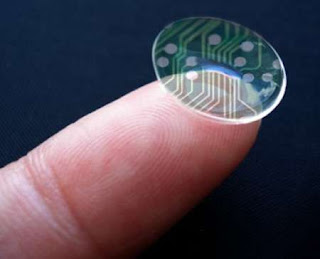Science Fiction can contain fantastic
storylines of idyllic peaceful governments, horrific post-apocalyptic
landscapes, and futuristic gadgets and spaceships. One of the most important elements of these
stories is the possible, and sometimes eventual, version of the future. If there were one genre that really
highlights and influences the future of our society, it would obviously be
science fiction. A common example of
this is the communicators in Star Trek that eventually influenced modern
cellphones, a case of science fiction becoming science fact. There are so many incredible innovations
happening everyday, that were originally thought only to be fiction. So I wanted to highlight a few examples of
these scientific advancements.
A company called ASAP Science has devised a
way of accurately measuring the way the human brain dreams. Subjects were shown images, and their brain
waves were measured to find a baseline for those images.
Then the subjects slept inside MRI machines to measure the brain activity during their dreams. The images are still fairly blurry at this point, but incredibly accurate.
Then the subjects slept inside MRI machines to measure the brain activity during their dreams. The images are still fairly blurry at this point, but incredibly accurate.
Scientists at the University of
Minnesota have developed a non-invasive “brain-computer interface” that allows
a person to control a robot with their mind.
Engineering professor Bin He has created what is basically a skullcap
that turns thought into action. They’ve
been able to steer a small flying robot around a room, even with the precision
of flying it through a ring. This could
mean a lot in the future for people with neurodegenerative diseases that no
longer have any mobility.
Robotic exoskeletons have actually
been around for a while. There are even
weightlifting contests around the world for home made and industrial
exoskeletons. But recently NASA and the military have begun exploring the use of robotics in actual situations. They have also successfully allowed
paraplegics to walk again.
Google started testing driverless cars at the
beginning of 2012. So far, 300,000 hours
have been successfully completed on actual roadways. Strangely, the only two accidents that have
occurred in that time happened when they were being manually driven. At this point, Nevada, Florida, and California have already legalized the self-driven cars.
Google Glass will be released soon, but there
are already products being developed that will make those glasses
obsolete. A scientist named Jang-Ung Park has created an inorganic light-emitting diode that can be fitted directly
to any brand of contact lens. They are
made from transparent and flexible graphene and silver nanowires. They’ve been tested on rabbits so far,
because apparently rabbits have very similar eyes to our own. No negative effects or irritation has been
caused by the small displays on the lenses.
Once developed further, they could create the same results that Google
Glass is showing. The researchers have said,
"Wearing
eye contact lenses, picture-taking and scanning, is not science fiction
anymore."
These are just a few examples of the many incredible
things being done today that were once considered science fiction.



It’s crazy to see how far we have come. Just the other day I was watching Mission Impossible: Ghost Protocol, and I was thinking that the contact lens they used to scan the Russian launch codes would be pretty interesting to have. I guess they are on their way to becoming reality!
ReplyDeleteThis is great. I've always kept an eye on robotic technology's growth, as it's super cool. I loved the bit about the robotic armor for soldiers, and I can't wait to see what else they design with it. Heck, we might even have full working mech suits within 20 years.
ReplyDelete